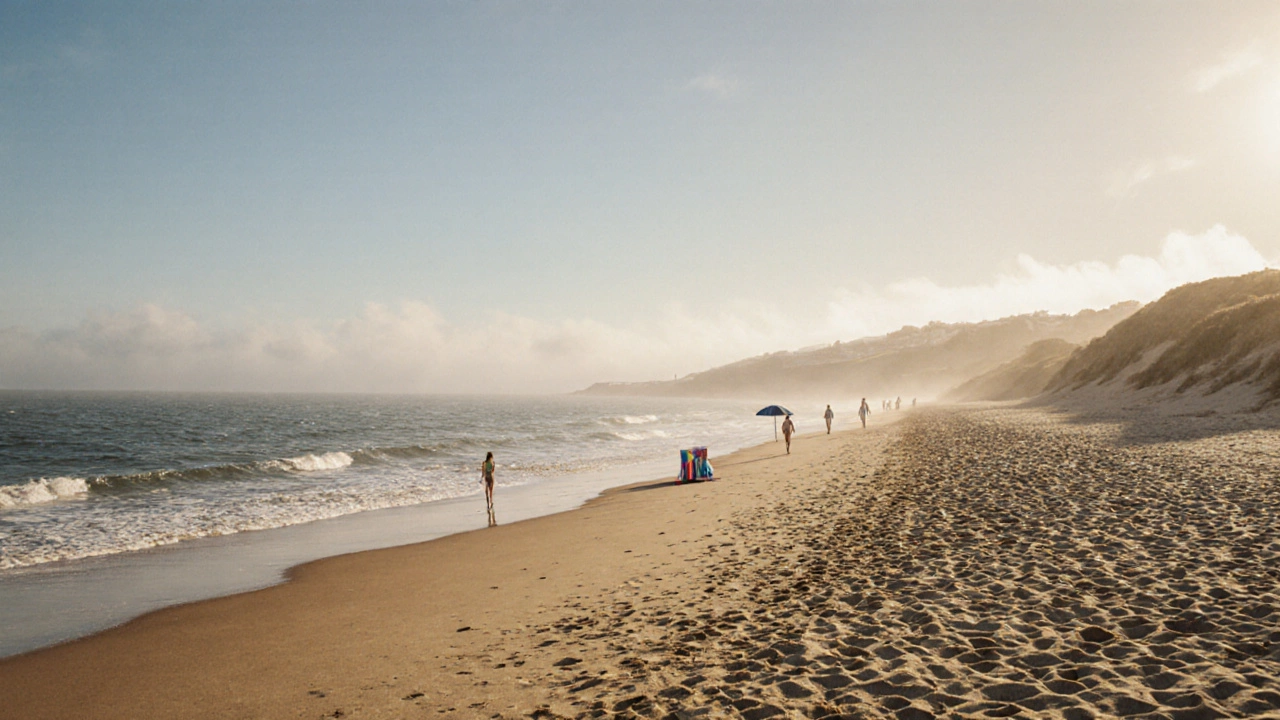Ideal Beach Weather: What Makes a Perfect Day by the Sea
When we talk about ideal beach weather, the combination of temperature, sunshine, wind, and humidity that creates the most comfortable outdoor experience by the water. Also known as perfect beach conditions, it’s not just about sunny skies—it’s about feeling good from the moment you step onto the sand. Most people assume it’s just hot and bright, but the real magic happens when the sun is high but not punishing, the breeze is light enough to keep you cool, and the sea feels inviting, not chilly.
What makes a day truly great at the beach isn’t just the forecast—it’s how the elements work together. Temperature, the air warmth that lets you relax without sweating or shivering should hover between 20°C and 26°C for most UK beaches. Too cold and you’ll be rushing back to your car; too hot and you’ll need shade just to sit down. Wind, the silent player that shapes your beach experience matters more than you think. A gentle offshore breeze keeps bugs away and cools you without tossing your towel around. But strong onshore winds? They bring chills, choppy water, and sand everywhere. Then there’s sunshine, the key ingredient that turns a regular day into a beach day. You want at least six hours of clear sky, but not the kind of brutal midday glare that turns skin pink in 20 minutes. Cloud cover should be minimal, but a few fluffy cumulus clouds? They’re perfect—they give you natural breaks from the sun.
People often overlook humidity, but it’s the hidden factor. High humidity makes even 22°C feel sticky and heavy. Low humidity? That’s when you feel the breeze, stay dry, and actually enjoy lounging. And let’s not forget the sea temperature. Even on a perfect air day, if the water’s below 16°C, most folks won’t swim. That’s why late June through August gives the UK its best shot at hitting all these marks together.
What you’ll find in the posts below aren’t just random beach stories—they’re real experiences from people who’ve chased the perfect day. Some figured out how to time their trips to avoid crowds and catch the calmest winds. Others learned why a 21°C day with 30% cloud cover beats a 28°C scorcher with no breeze. You’ll see how weather changes across Cornwall, the Isle of Wight, and Northumberland—not just in temperature, but in feel. No fluff. No guesswork. Just what works, when, and where.

Best Month for the Beach: When to Go for Perfect Sun, Sand, and Surf
Find out the best month for the beach based on location, weather, crowds, and price. Avoid tourist traps and pick the perfect time for sun, sand, and calm waters.
